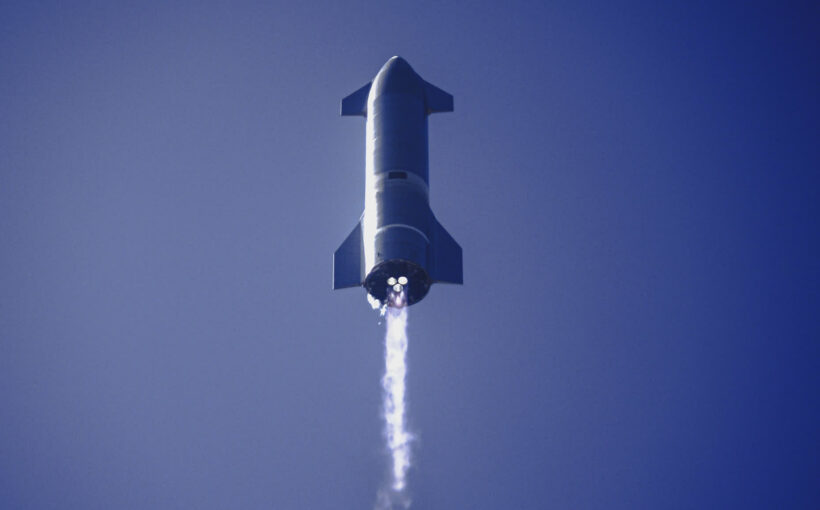- Elon Musk's SpaceX revealed its plan for an orbital flight test of its next-generation Starship rocket, which would launch from Texas and then splashdown off the coast of Hawaii.
- Starship prototypes stand at about 160 feet tall, or around the size of a 16-story building, and are built of stainless steel.
- The Starship program continues to move at a rapid pace, with the company coming off last week's successful landing and recovery of Starship SN15.
Elon Musk's SpaceX on Thursday revealed in filings to the Federal Communications Commission its plan for the next step in testing its massive Starship rocket, in a flight that would splash down off the coast of Hawaii.
SpaceX has conducted multiple test flights of Starship prototypes over the past year, but the plans outline the company's first attempt to reach orbit with the rocket.
Starship prototypes stand at about 160 feet tall, or around the size of a 16-story building, and are built of stainless steel – representing the early version of the rocket that Musk unveiled in 2019. The rocket initially launches on a "Super Heavy" booster, which makes up the bottom half of the rocket and stands about 230 feet tall. Together, Starship and Super Heavy will be nearly 400 feet tall when stacked for the launch.
The company's FCC filings say it will launch a Starship rocket atop a Super Heavy booster from SpaceX's development facility in Boca Chica, Texas. Then the booster will separate, to partially return "and land in the Gulf of Mexico approximately 20 miles from the shore," the filings say.
"The Orbital Starship will continue on flying between the Florida Straits. It will achieve orbit until performing a powered, targeted landing approximately 100km (~62 miles) off the northwest coast of Kauai in a soft ocean landing," SpaceX wrote in the filing.
The orbital flight would last just over 90 minutes. SpaceX is working in coordination with the FCC, U.S. Air Force, NASA and the FAA for the flight. While the timing of the flight is to be announced, Musk two months ago said SpaceX's goal is to launch the orbital mission by July.
It has been nearly a year since Musk told SpaceX employees that progress on Starship needed to accelerate "dramatically and immediately," calling it the company's top priority. Since then, the program has moved at a rapid pace, with a steady stream of production, testing and flights. Just last week, SpaceX successfully landed and recovered Starship prototype SN15. It was the fifth high-altitude flight test of the rocket, and the first that ended without the prototype exploding.
The company is developing Starship to launch cargo and people on missions to the moon and Mars.
Last this month, NASA awarded SpaceX a nearly $3 billion contract to build a lunar variation of Starship to carry astronauts to the moon's surface for the agency's Artemis missions. However, while Musk's company continues to move forward with Starship development, NASA suspended SpaceX work on the HLS program after Jeff Bezos' Blue Origin and Leidos' subsidiary Dynetics each filed protests of the NASA contract award.
Become a smarter investor with CNBC Pro.
Get stock picks, analyst calls, exclusive interviews and access to CNBC TV.
Sign up to start a free trial today.
Source: Read Full Article
